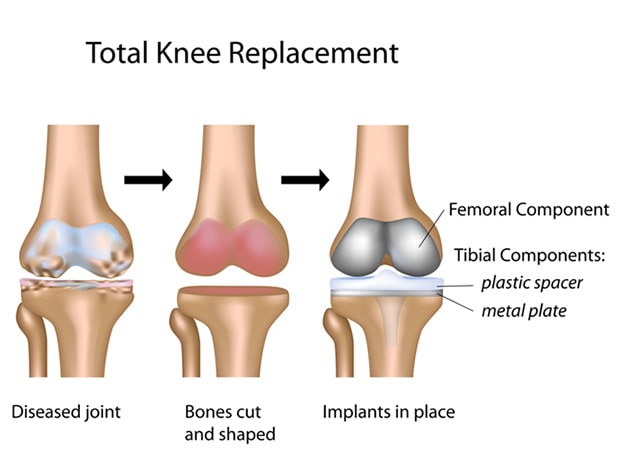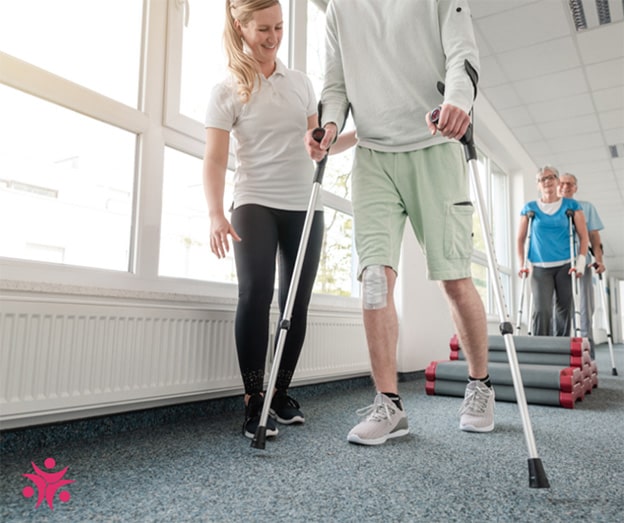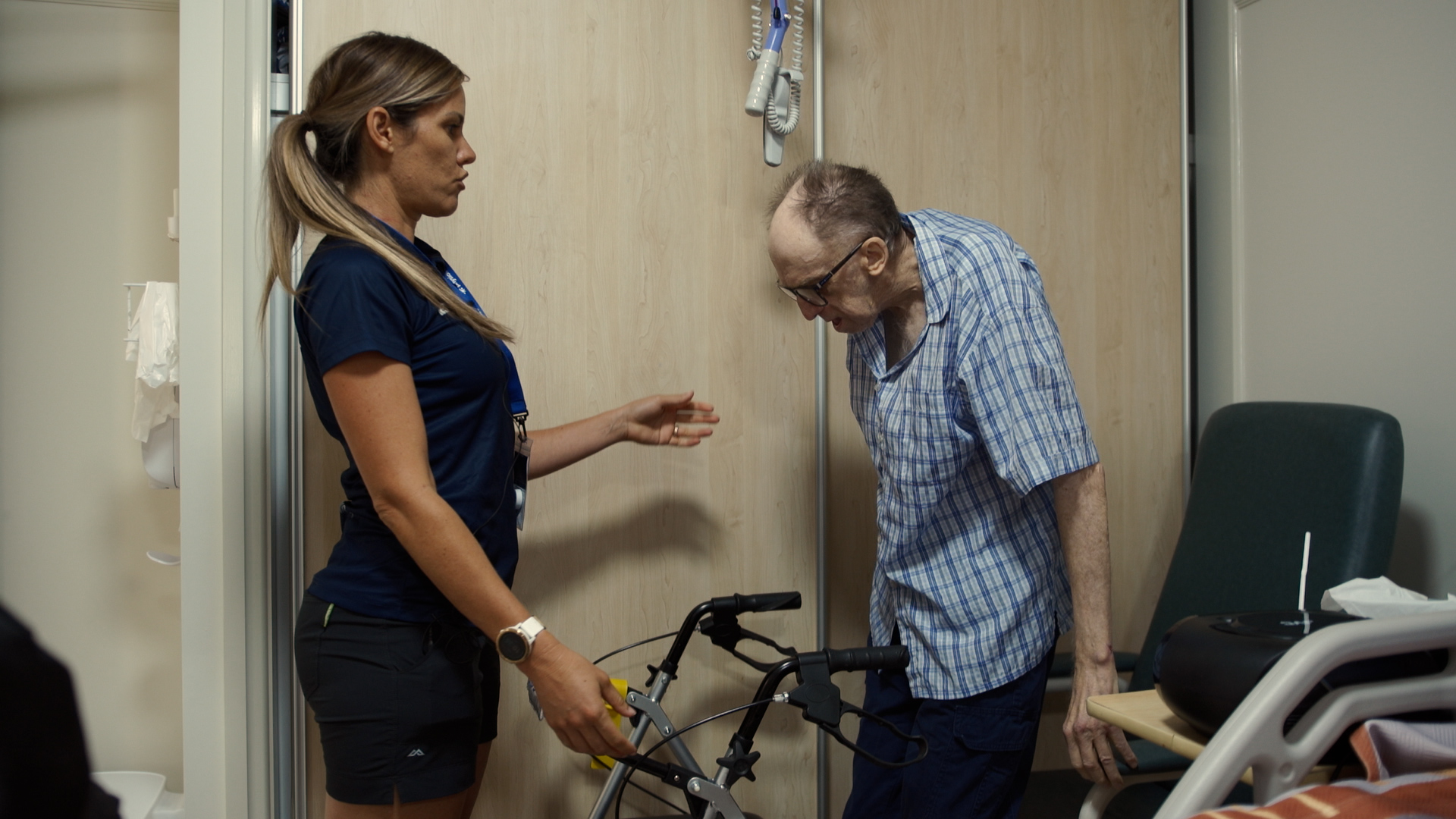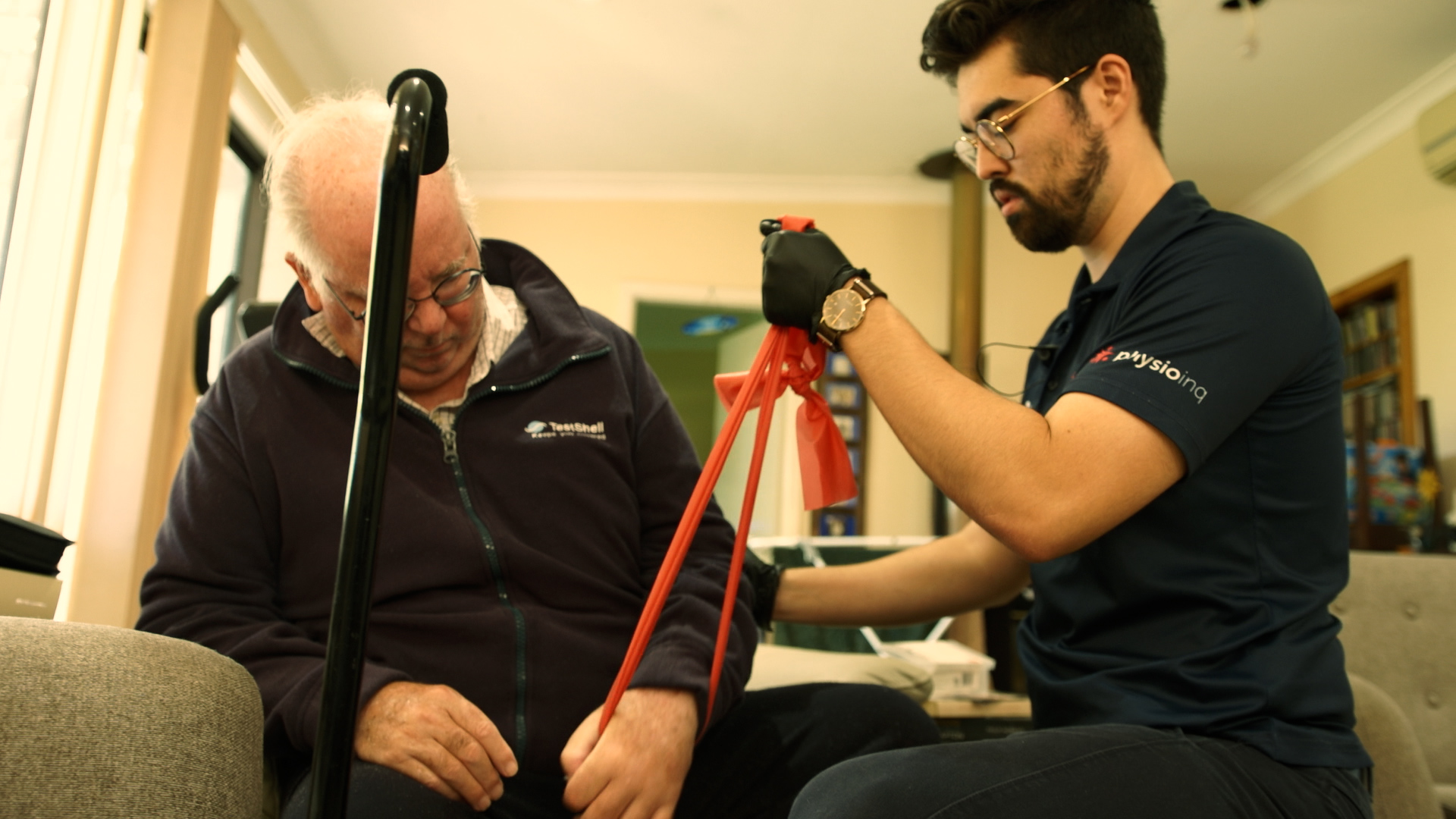Make an Appointment
Knee replacement surgery, whether total or partial, involves a long recovery and rehabilitation process.
As physiotherapists, we see many clients who’ve gone through knee replacement surgery and as tough as the recovery can be, it’s amazing to see them get back on their feet with less pain and more mobility.
If you’re planning to get knee replacement surgery, it makes sense that you might feel a little anxious about all the unknowns. Here, we’re going over some of what you can expect leading up to your surgery and how the rehabilitation process usually looks.
As always, please talk to your doctor or surgeon about the specifics of your circumstances as these are generalisations meant to help you ask the right questions.
So, with that, let’s get started!
What to expect before knee replacement surgery?
Knee replacement surgery requires some form of anasthesia where you’ll either be unconscious or awake but unable to feel the procedure. Your doctor will inform you of your options to make the best decision for your particular circumstances.
During knee replacement surgery (also known as knee arthroplasty), damaged bone and cartilage from your thigh bone, shinbone and knee bone are replaced with a prosthetic joint made of metal alloys, plastic and polymers.
“The goal of knee replacement surgery is to resurface the parts of the knee joint that have been damaged and to relieve knee pain that cannot be controlled by other treatments.” - Hopkins Medicine

How long does the pain last after a knee replacement?
A total knee replacement will affect each person differently. Most people will experience some pain, swelling, and bruising after surgery.
After a knee replacement you might experience mild to general pain and swelling for as long as 3 to 6 months after knee replacement surgery. The overall healing process can take up 6 to 12 months.
According to the American Academy of Orthopaedic Surgeons, many people experience moderate to severe swelling in the first few days or weeks after surgery and mild to moderate swelling for 3 to 6 months after surgery.
You can reduce swelling by doing the postoperative exercises provided by your physiotherapist. Elevating your leg on a pillow in bed for several hours each afternoon and using compression stockings will also help.
However, you’ll have options when it comes to pain management post knee replacement surgery. In hospital, you’ll likely be on strong medication. But once you’re home, you’ll be prescribed pain relief and anti-inflammatory like ibuprofen or paracetamol which still helps with the pain but with less intensity.
Throughout every stage of the recovery process, physiotherapy is necessary. Working with a physiotherapist not only helps with pain relief, but also helps you strengthen the muscles in your knee, improve your range of motion, resume independent living sooner and avoid potential complications.
To improve your chances of recovering quicker without complications, be sure to rest as much as possible, eat well and stay hydrated. Follow your physiotherapists’ guidelines and the health advice from your doctor and you’ll be well on your way to recovery.
The recovery can have its ups and downs. You should be able to return to doing everyday activities 3 to 6 weeks after knee replacement surgery. However, you should plan to take somewhere between 4 and 16 weeks off from work, depending on the type of work you do.
What happens in the first few days after a knee replacement?
After knee replacement surgery, you’ll remain in the hospital for 1 to 5 days and you’ll most likely start working with a physiotherapist immediately.
It’s perfectly normal to experience pain, swelling and bruising in the first few days after your knee surgery but it’s still important to do your best to move your knee as much as possible as soon as possible. But, you shouldn’t be putting any weight on your leg at this point.
Generally, knee replacement patients can leave hospital when they’re able to:
- Get in and out of bed and walk a short distance with the help of a walker or crutches
- Walk up and downstairs with a walking aid
- Bend the affected knee 90 degrees
- Understand the precautions to avoid potential injuries

However, different hospitals have discharge criteria. Keep in mind, you might continue to use a walking device once you leave the hospital.
You might have to stay in hospital longer if:
- You have had two knees replaced at the same time
- Uncontrolled pain
- General weakness
- Other pre-existing medical conditions
Some doctors also prescribe what’s called a Continuous Passive Motion (CPM) machine that will move your leg manually without your assistance. It’s important for the health of your knee joint that it doesn’t stay still for too long.
Your knee will also have bandages, stitches, staples, tissue glue, tape, or some combination of all five. You’ll need to change the bandage as your doctor suggested to ensure everything heals properly. Any glue or tape will fall off in their own time and your doctor will let you know when you’ll come back in to get your stitches or staples removed.
While your knee is bandaged, you may not be able to have a full shower for 5 to 7 days and it could be up to 3 or 4 weeks before the wound should be soaked in water at all.
Remember, you’re recovering from major surgery.
So, for the first few days, you’ll need to take it easy so your body and knee can recover. You won’t have much energy, so you’ll need some assistance doing your normal activities. A specialised rehab centre or in home care & assistance may be recommended if you are struggling to adapt or cope with the situation.
What to expect in the first week after knee replacement surgery?
In the first week after a knee replacement, you’ll need to schedule an appointment to have your stitches or staples removed. This appointment should happen between 10 and 21 days after your knee replacement surgery.
“Within a week, your knee will technically be able to bend 90 degrees, though it may be difficult due to pain and swelling. After 7–10 days, you should be able to fully extend your knee out straight.” - healthline
You’ll still be walking with a walker for the first 1 to 3 weeks before switching to crutches and you won’t be able to drive. You’ll likely still be in a bit of pain and requiring assistance. However, within the first week, you’ll start to notice some improvements.
Straight away, you’ll need to work with a physiotherapist to keep your knee strong and mobile. Depending on your previous fitness levels and overall health, your physio schedule and the exercises you’ll do in therapy will vary.
What to expect 3 weeks after knee replacement surgery?
Three weeks after knee replacement surgery, you might be either walking with a walker, with crutches or with a cane. You’ll likely experience mild pain and be low on energy. Hopefully by now you’ll be attending regular physiotherapy appointments to help rehabilitate your knee with your physiotherapists looking to implement more aggressive ROM exercises on your knee.
You won’t be able to drive at the 3-week mark, but you might start to be able to return to doing more around the house. You’ll probably be able to stand and walk around for about 10 minutes at a time and normal routines like getting dressed will become easier.
What to expect 5 weeks after knee replacement surgery?
When you reach 5 weeks post-knee replacement, you’ll likely notice a huge improvement. Generally, you’ll be able to walk on your own anywhere between 4 and 8 weeks after a knee replacement. The pain will have mostly subsided, and the swelling and inflammation should be greatly reduced.
You still won’t be able to drive until about 8 weeks after your knee replacement but so long as you’ve been sticking with your physiotherapy, normal everyday activities should require much less assistance.
You should wait a full 12 weeks before lifting anything heavier than 4.5 kg and all weightlifting for exercise purposes is still off-limits unless prescribed by your physio.
What to expect after partial knee replacement surgery?
The recovery process for a partial knee replacement is generally less intense than recovery for a full knee replacement. Since the entire joint hasn’t been replaced, you can expect your body to heal more quickly.
However, partial knee replacement surgery is still rather invasive and it could be to your benefit to treat your recovery like you’ve just gone through a total knee replacement.
You’ll still be in quite a bit of pain requiring various pain management methods and you won’t be able to do much for the first month or so. You’ll also need to see a physiotherapist or physical therapist on a regular basis to ensure the health of your knee joint.
How much should you walk after a knee replacement?
After you have recovered from your knee replacement surgery, you should be able to walk normally with minimal pain or no pain at all. You’ll likely be able to return to your normal activities.
It’s crucial is to take your time during the recovery process, complete all of your physiotherapy, and wait until your knee is fully recovered before doing all the things you used to do pre-surgery.
Make sure to get the ok from your doctor or physiotherapist before returning to any activities.
Pending on your recovery and your own situation it might be recommend that you exercise for 20 to 30 minutes, 2 or 3 times a day and walk for 30 minutes, 2 or 3 times a day during your early recovery – Orthoinofo
What to expect after knee replacement surgery heals?
Once your knee replacement heals and you’re feeling ready to take on the world again, there are a few things to keep in mind.
Just keep in mind you may still have some slight pain, and the area in your knee may be swollen for 3 to 6 months after surgery. Your knee will continue to improve for 6 to 12 months as long as you stay committed to your rehab.
It’s always recommended to get your knee checked regularly to ensure everything is progressing in the right direction and avoiding any unnecessary setbacks. You’ll also benefit from continuing to work with a physiotherapist who can guide you towards gaining more strength, flexibility and mobility in your knee.
Moving forward, here are our top tips for anyone who’s recently recovered from a full or partial knee replacement surgery:
- Don’t do any more than you need to
- Avoid biking uphill
- Avoid activities that put stress on your knee joints including running, jumping and sport that involves running and jumping
- Avoid sitting for more than 1 hour at a time
- Sit on the edge of the seat when riding in cars and tuck your feet in
It may never feel like the knee you were born with but a knee replacement can truly be a miracle for those who need them.
Many people who’ve had knee replacement surgery come to Physio Inq for both rehabilitation and regular upkeep. As we’ve mentioned quite a lot, working with a physiotherapist after a knee replacement is absolutely essential.
Joints are meant to move and it’s key to find knowledgeable experts in the field who can ensure you’re healing and maintaining your knee safely and with your long-term goals in mind.
Come see us at one of our clinic locations throughout Australia or book an appointment with our Mobile Services that come to you! Contact us today.
Other useful resources
Netball Australia KNEE Program | Reducing ACL Injury
How Do You Get Rid of Runner’s Knee Pain?
The Ultimate Guide To Patellar Tracking Disorder
Osteoarthritis Exercises for Knee Pain
Knee Pain | Five Easy Exercises To Avoid Knee Pain
Date Published: Thursday, July 15, 2021
Locate a Women's Health
Service Near me
Get the experience & convinence you deserve to support your or a loved one's allied health needs.
Our Women's Health team are currently serving & taking appointments in the following states and regions in Australia:
Need to get into direct contact with ur Client Services team? We're all ears. Call our team directly on 1300 731 733








